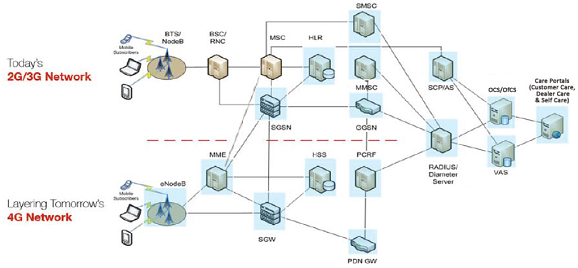
Generic Mobile Reference Architecture
A Generic Framework for Mobile Communications.

Generic Mobile Architecture
image ©fromgenttogen.usUseful Links
The different generations of mobile phone technology are based on a similar mobile network architecture. In order to help the understanding of the architecture of 2G, 3G and 4G networks; a generic mobile reference architecture is presented here. There are a number of different nomenclature for essentially the same thing running through these architectures. This model is an attempt to help compare the architectures for these different names and models.
Overall there are 4 different aspects to the Generic Mobile Architecture :
- Mobile device. This is the device that the user uses to connect to the network. Often though of as the moble phone but other devices can connect to the mobile network.
- Wireless Network Through this the wireless network, the Mobile Device connects.
- Base Station which is the receiving mast and transceiver that takes the wireless signal and moves this onto the core network usually through fibre.
- =Core Network that takes the communications from the Base Station and makes decision about what to do with the signal plus the management of the subscriber's access to the network.
The table below gives an overview of the different components in 2G / 3G / 4G / 5G networks.
| 2G | 3G | 4G | 5g | |
|---|---|---|---|---|
| User equipment | Mobile Station | User Equipment | LTE User Equipment | 5G User Equipment |
| Wireless Communications | 900 / 1800 MHz | 2.1GHz | 800 and 2.6GHz | 700MHz and 3.4-3.8GHz |
| Base Station | Base Station Subsystem BTS / BSC | Node B | eNode B | gNodeB |
| Operational Support | OMC VLR HLR AUC EIR | OMC VLR HLR AUC EIR | MME HSS | MME HSS 5G |
| Core Network | Mobile Switching Centre | Serving GPRS Support Node and Gateway GSN | Serving Gateway and Packet Gateway | 5G Evolved Packet Core |
| Trunk Network | PSTN | IP | IP | IP |
© mobilephonetechnology.co.uk all rights reserved 2017-2025
